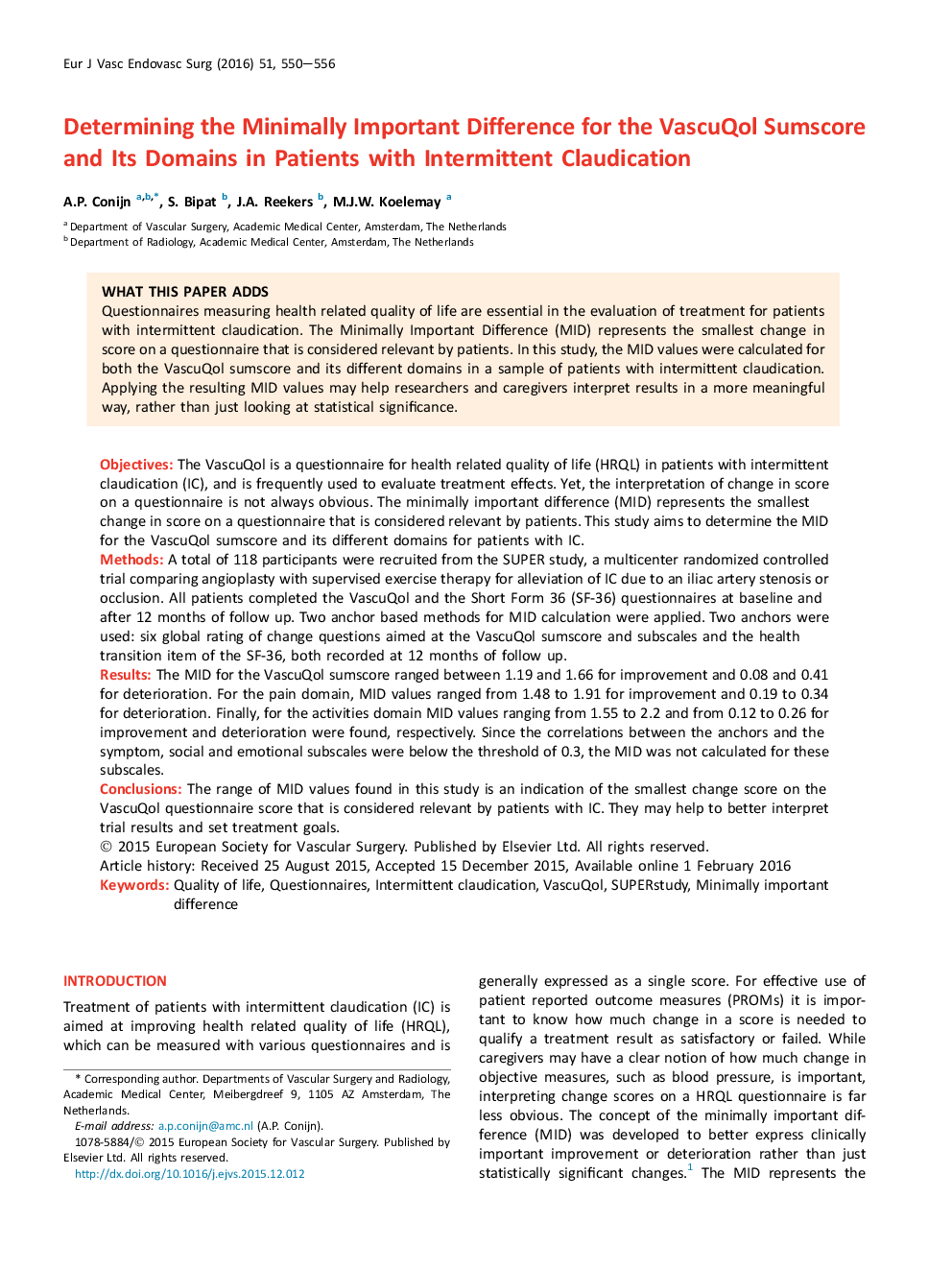| Article ID | Journal | Published Year | Pages | File Type |
|---|---|---|---|---|
| 5957343 | European Journal of Vascular and Endovascular Surgery | 2016 | 7 Pages |
ObjectivesThe VascuQol is a questionnaire for health related quality of life (HRQL) in patients with intermittent claudication (IC), and is frequently used to evaluate treatment effects. Yet, the interpretation of change in score on a questionnaire is not always obvious. The minimally important difference (MID) represents the smallest change in score on a questionnaire that is considered relevant by patients. This study aims to determine the MID for the VascuQol sumscore and its different domains for patients with IC.MethodsA total of 118 participants were recruited from the SUPER study, a multicenter randomized controlled trial comparing angioplasty with supervised exercise therapy for alleviation of IC due to an iliac artery stenosis or occlusion. All patients completed the VascuQol and the Short Form 36 (SF-36) questionnaires at baseline and after 12 months of follow up. Two anchor based methods for MID calculation were applied. Two anchors were used: six global rating of change questions aimed at the VascuQol sumscore and subscales and the health transition item of the SF-36, both recorded at 12 months of follow up.ResultsThe MID for the VascuQol sumscore ranged between 1.19 and 1.66 for improvement and 0.08 and 0.41 for deterioration. For the pain domain, MID values ranged from 1.48 to 1.91 for improvement and 0.19 to 0.34 for deterioration. Finally, for the activities domain MID values ranging from 1.55 to 2.2 and from 0.12 to 0.26 for improvement and deterioration were found, respectively. Since the correlations between the anchors and the symptom, social and emotional subscales were below the threshold of 0.3, the MID was not calculated for these subscales.ConclusionsThe range of MID values found in this study is an indication of the smallest change score on the VascuQol questionnaire score that is considered relevant by patients with IC. They may help to better interpret trial results and set treatment goals.
